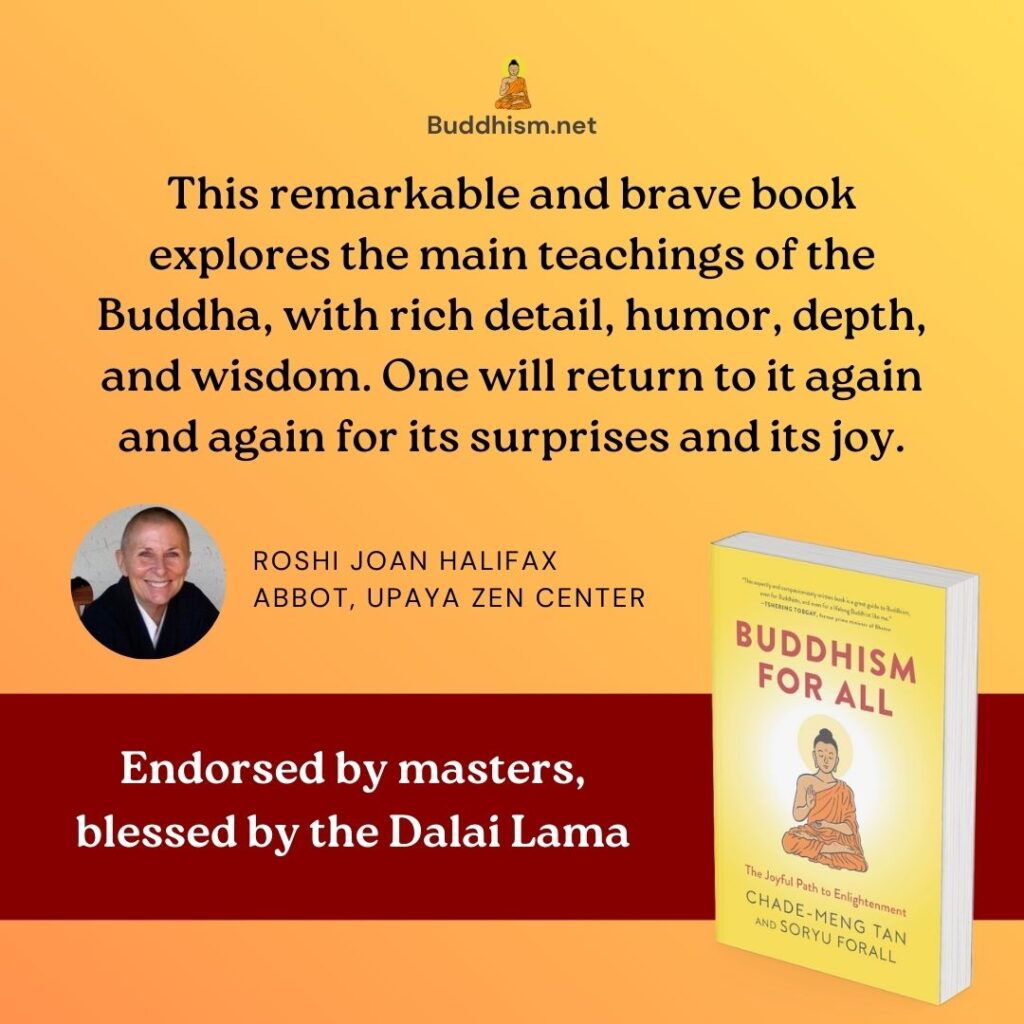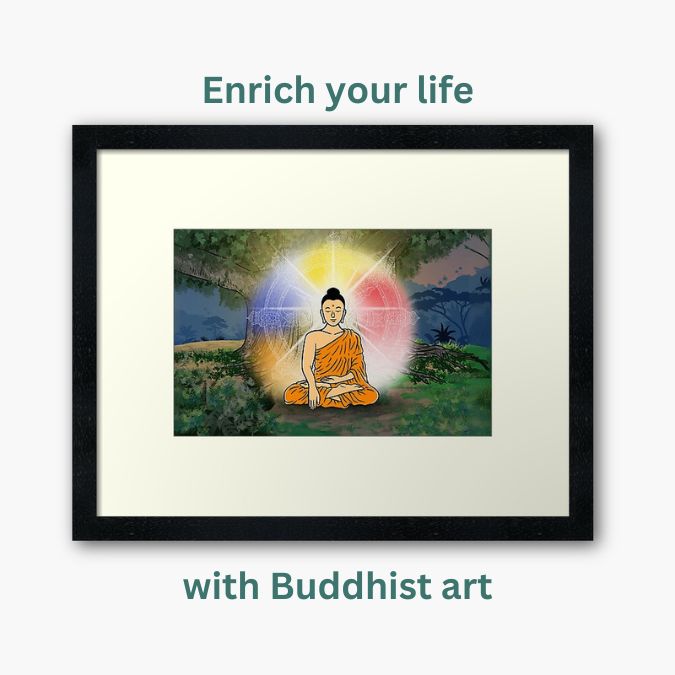
“Say samadhi!”
(Context: The history of sectarian Buddhism.)
My own experience as a Buddhist was cross-sectarian. I consider my “home base” to be Zen. Zen was my first real encounter with Buddhism as a teenager, and even though I did not understand it at the time, it made an indelible impression on me, and I kept going back to it as an adult. My first real Dharma teacher was Vajrayana, and my first real meditation teacher was Theravadin. I learned Pure Land Buddhism (another branch of Mahayana) as a young adult, and I still practice it alongside my meditation. So, all three major sects are represented in my own growth. All that, plus I am a huge fanboy of the early Buddhist texts, which is itself cross-sectarian.
Since I’m not a member of any sect in particular, whenever anybody asks me which sect of Buddhism I belong to, I answer, “Hahayana.”
As usual, Soryu does better than me on all counts. His experience of Buddhism contains far more breadth and depth than my own. When Soryu was in his late teens, he flew to Japan, in order to train in a Buddhist monastery. But he did not know anything about the different sects and practices available to him. In fact, he had never read a single book on Buddhism. He did not care about any of that. He only wanted to find a true master.
He found one: Shodo Harada Roshi of the Rinzai school of Zen. This master resolved the deep questions he had been asking since he was a child, and gave him deep faith in the Dharma. For this reason, not due to any preferences about style of teaching or practice, he trained under him for several years. Due to great kindness, Harada Roshi allowed him to train in other traditions as well. That was how Soryu ended up also living and training full-time in monasteries of other Buddhist sects around the world. All that, plus he is familiar with the major Mahayana texts, and the Nikāyas. Plus, his training is deep enough to qualify him as an abbot. Wow. Somebody get this guy a beer. (Actually, don’t.)
Given the breadth and depth of Soryu’s exposure to Buddhism, he appears to be a great person to ask about sectarian Buddhism. I mean, in ancient times, it was easy for different branches of Buddhism to grow apart due to distance. Imagine needing to walk or ride a horse for thousands of miles to have a conversation with a monk who teaches a style of practice you do not understand. But nowadays, you can get on a plane, sit in a cushioned chair for the length of time it takes to read a book, and when you walk off that plane, you’re on the other side of the world. So why are there still differences between sects of Buddhism? Well, Soryu did get on a plane, sit in a cushioned chair, read a book, and end up on the other side of the world to study Buddhism. So, I asked him.
Soryu’s first answer shocked me, in a way that made me laugh. In the modern world, people appreciate Soryu’s first-hand knowledge of different forms of Buddhism. They feel that a person who has such breadth of knowledge must be an “expert.” But he told me that in a traditional Buddhist setting, a person who has trained in many sects is considered a “quitter.” This may seem funny, but there is truth to this claim. It just takes a long time to gain deep understanding of any tradition. That also means that there are few people who can really discuss more than one tradition, and any attempts to do so by those without the expertise of decades of training will be limited in their clarity. This is why communications between different sects is still problematic to this day, even when we have airplanes and telephones.
A more important reason Buddhism has so much diversity is that it tries to serve all people, and different people respond best to different methods of practice. One example, which we previously mentioned, is that for a practitioner who takes naturally to devotional faith, Pure Land Buddhism can do wonders on all three parts of the threefold training: virtue, samadhi and wisdom. Whereas for somebody resistant to any form of devotional faith (yes, I’m an engineer, I understand), the more secularized forms of practice commonly found in Theravada Buddhism can do wonders. Therefore, in order to best serve these two populations, at least these two very different forms of Buddhism need to exist.
Soryu gave examples regarding other parameters too. Some monastic traditions run monasteries like benevolent dictatorships where the teacher’s every instruction is obeyed immediately. Some monastic traditions train so rigorously the monastics do not even lie down to sleep. They sleep upright in sitting meditation posture, to ensure that they practice even when sleeping. But other monastic traditions are far more relaxed about everything. Again, these variations exist because some people do very well with some training parameters, but do very badly with others.
Having said all that, Soryu tells me I am missing the most important point. He says having sects is actually a good thing, not a bad thing. The reason we have so many sects and sub-sects is that there is so much creativity in Buddhism. Everyone is different, and different styles are needed to fit each person. To help everybody, masters got creative. All that creativity breeds the enormous diversity you see in Buddhism today. In other words, sectarian Buddhism is what it is today because Buddhism values creativity, and disregards fixed views and attachment to rituals. That is a very good thing.
Of course, there is a downside: diversity begets disagreements, and disagreements beget conflicts. The most important thing is not to have no disagreements, it is to be able to disagree without conflict. Zen Master Sheng Yen and the Dalai Lama provide an example of how great masters can openly disagree without any conflict whatsoever.
In real life, this actually happens very commonly at all levels of Buddhism. Soryu experienced a lot of that himself. When he was traveling from monastery to monastery, wherever he went, the resident monks welcomed him warmly, knowing full well that he came from a different sect of Buddhism. Not only did they welcome him warmly, they treated him like a brother, and let him train together with them as if he was one of them. The difference in sectarian origin did not matter even one bit.
I experienced some version of it myself too. In any Buddhist training class, it is not uncommon to have students from all branches of Buddhism. For example, I attended a meditation retreat where the instructors were a Theravadin monk and a lay teacher, and the students included monastics from a variety of Buddhist sects. Similarly, in a public talk by a prominent monastic from any school of Buddhism (for example the Dalai Lama or Thich Nhat Hanh), you will see monastics from a variety of Buddhist schools in attendance, usually given the same preferential seating.
Every true Buddhist practitioner knows: we are all one big family.
Activities
- Reflect on this post with Angela:
- Reflect on your own experience of Buddhism. What lineage are they from? What are the major emphasis of each of the lineages? And reflect on yourself – why did you choose to practice with this particular lineage? What aspects of the lineage resonate with you?
- It is important to know yourself, and know what types of practices would resonate more with you.
- For instance, are you more devotional, or more doctrine-based? Do you like meditation in solitude, or do you enjoy community-based activities to serve others? Do you like to chant? Are you able to sit still or do you need a physical type of practice?
Artwork by Colin Goh.


